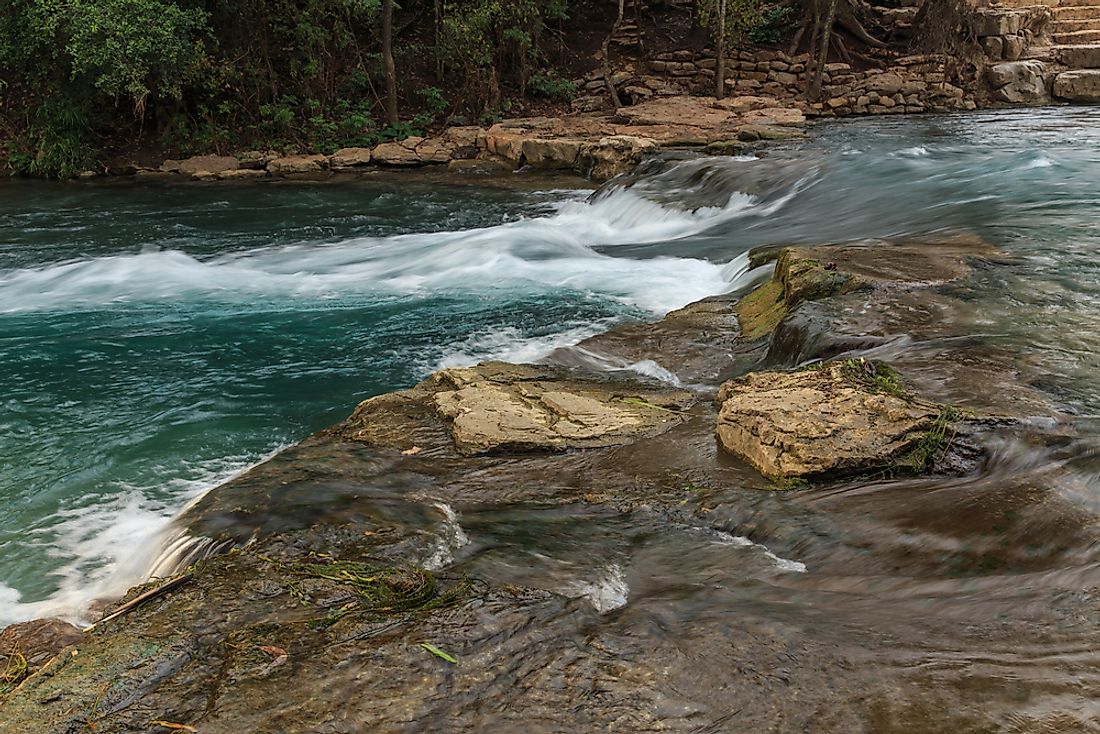What Is The Edwards Aquifer?

The Edwards Aquifer is a large aquifer, located in central/southern Texas. It covers an area of 4,350 square miles. The Edwards Aquifer has served and continues to serve central/southern Texas. Its uses have ranged from recreation to drinking water, and industry. This aquifer also faces environmental pressures. The Edwards Aquifer is a major source of water for millions of people living in central/southern Texas.
Artesian Aquifer
An artesian aquifer is an aquifer that is confined, containing groundwater. Being a confined aquifer means the aquifer is confined within two impervious layers. Those layers are either made of clay or rocks. Because the aquifer is located between two impervious layers, positive pressure is put under an artesian aquifer. Any drilling of the aquifer will result in water rushing above the aquifer. This can be compared to putting water in a balloon to a point of full capacity. Once the balloon is punctured, water will rush out of the balloon as pressure is being released.
A Karst Aquifer
The Edwards Aquifer's geological structure is that of limestone karst. In particular, it consists of Edwards limestone. This highly permeable limestone means that large amounts of water can be held within the aquifer. In addition to permeability, there are several faults. Water going into the aquifer will find its way into the crevices, which dissolves the limestone. To understand this, sand aquifers are permeable, but have small pores for water to enter. Aquifers made of limestone, such as the Edwards Aquifer, have larger pores for water to go through and remain. Water often makes these limestone pores even larger, creating more room for the storage of subterranean water.
Historical and Recreational Importance
The importance of the Edwards Aquifer comes from being a water source. However, the extent of which it is a water source shapes both physical and human geography. In the realm of physical geography, the Edwards Aquifer is a major water sources for rivers and springs in the state of Texas. The San Marcos Springs is a collection of springs located in between the cities of Austin and San Antonio. Those springs receive their water from the Edwards Aquifer. The headwaters of the San Marcos River come from the San Marcos Springs. A dam was built on the San Marcos River to harness its hydropower. Today the river is used for recreational purposes, especially fishing and boating.
Another river that benefits from the Edwards Aquifer is the Comal. The Comal River is a small but navigable river that flows through the city of New Braunfels, Texas. The Comal River flows into the Guadalupe River, which empties into the Gulf of Mexico neat Port Lavaca, Texas. Like the San Marcos River, the Comal has a history of being used for harnessing water power. Cotton gins derived their power from the Comal River. Today, the Comal River is a major source of water recreation, similar to the San Marcos River.
Source of Drinking Water
The Edwards Aquifer is not just a source for rivers and springs, it is an important source of drinking water for the people living in the area where the aquifer lies. The state of Texas is home to 3 of the USA's top ten largest cities. One of those cities is San Antonio, home to 1,492,510 people. Located near San Antonio is the capital of Texas, Austin. The city of Austin has a population of 947,890 people. At least 2 million people depend on the Edwards Aquifer for their water supply. At one time, the Edwards Aquifer was the only source of water that San Antonio received its drinking water. The aquifer continues to be a source of drinking water for millions of people in Central Texas.
Economic Importance
As crucial a source of drinking water that it is, the Edwards Aquifer has an economic importance. Agriculture is an important sector of the economy in central and southern Texas, particularly ranching and farming. Farming and ranching operations depend on water, thus, making the Edwards Aquifer crucial for economic activities. The water from this aquifer is used for industrial purposes as well.
Concerns
Millions of people rely on the Edwards Aquifer for several reasons. It is also an aquifer that is facing threats. The aquifer is located in a fast-growing region. One concern is how many people the aquifer can support. It is being used for drinking, and for economic activities, both farming and industrial. This is especially of major concern in times of drought. With rapid population growth and fast-growing urbanization, another concern is pollution. Whenever rain takes place, the rainwater goes underground and helps to recharge the aquifer. Pollutants are often carried with the rainwater underground.











